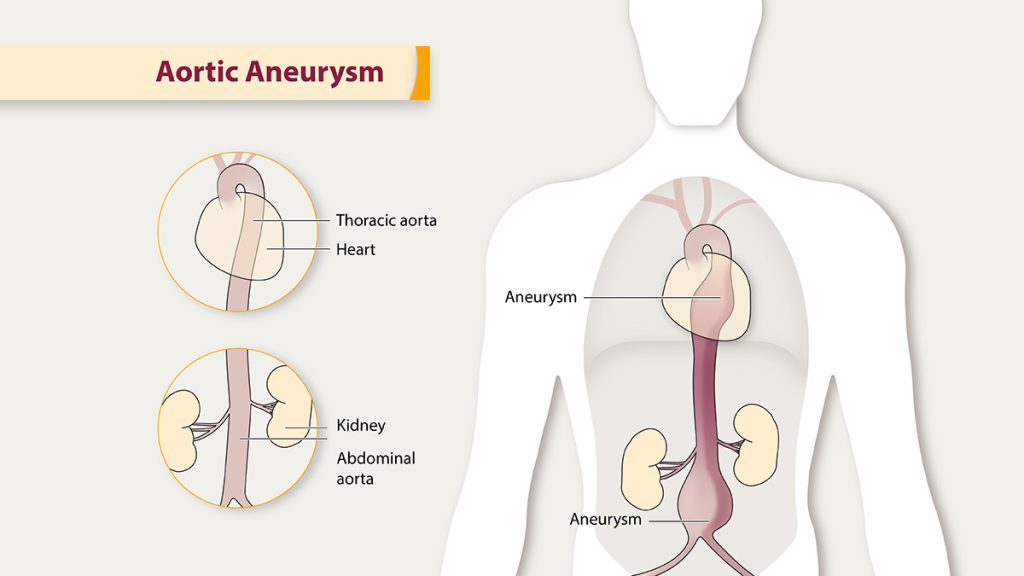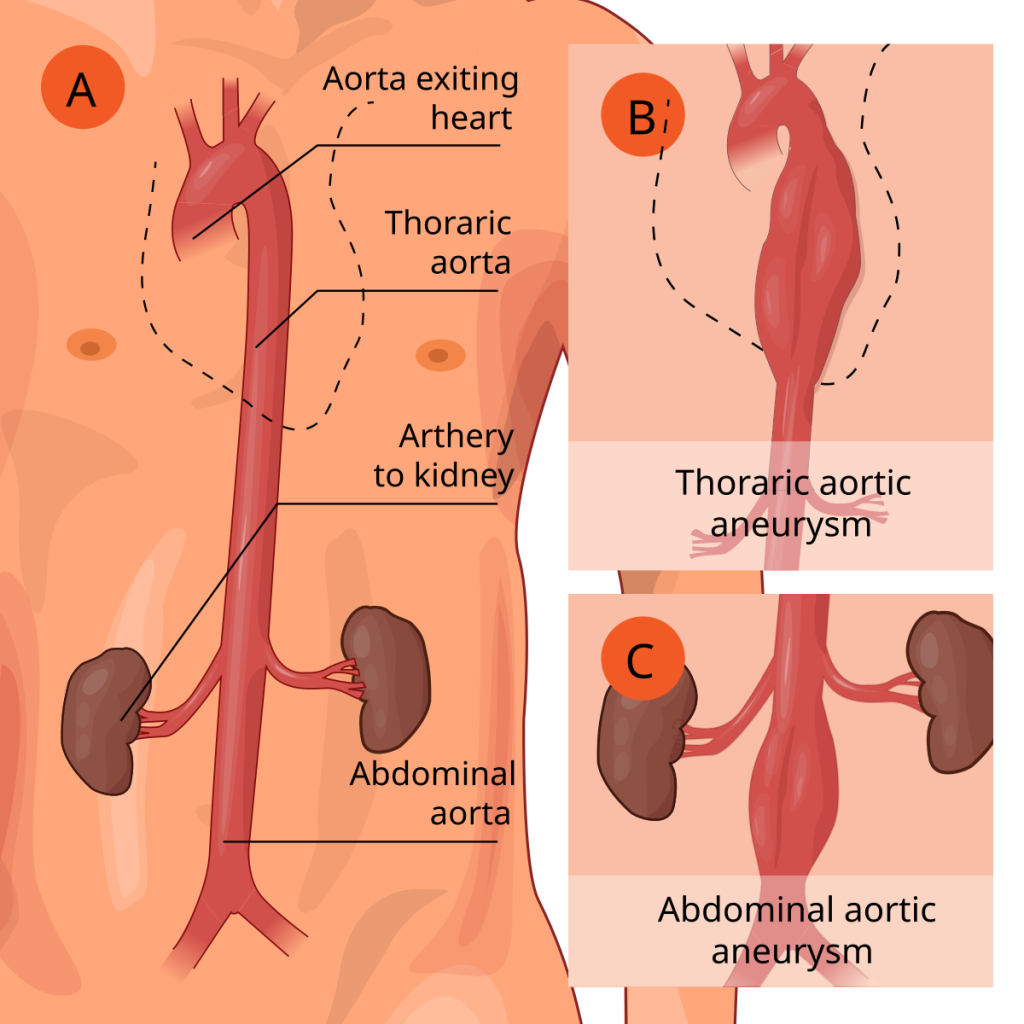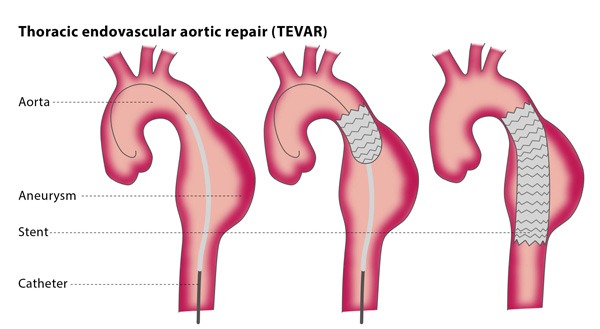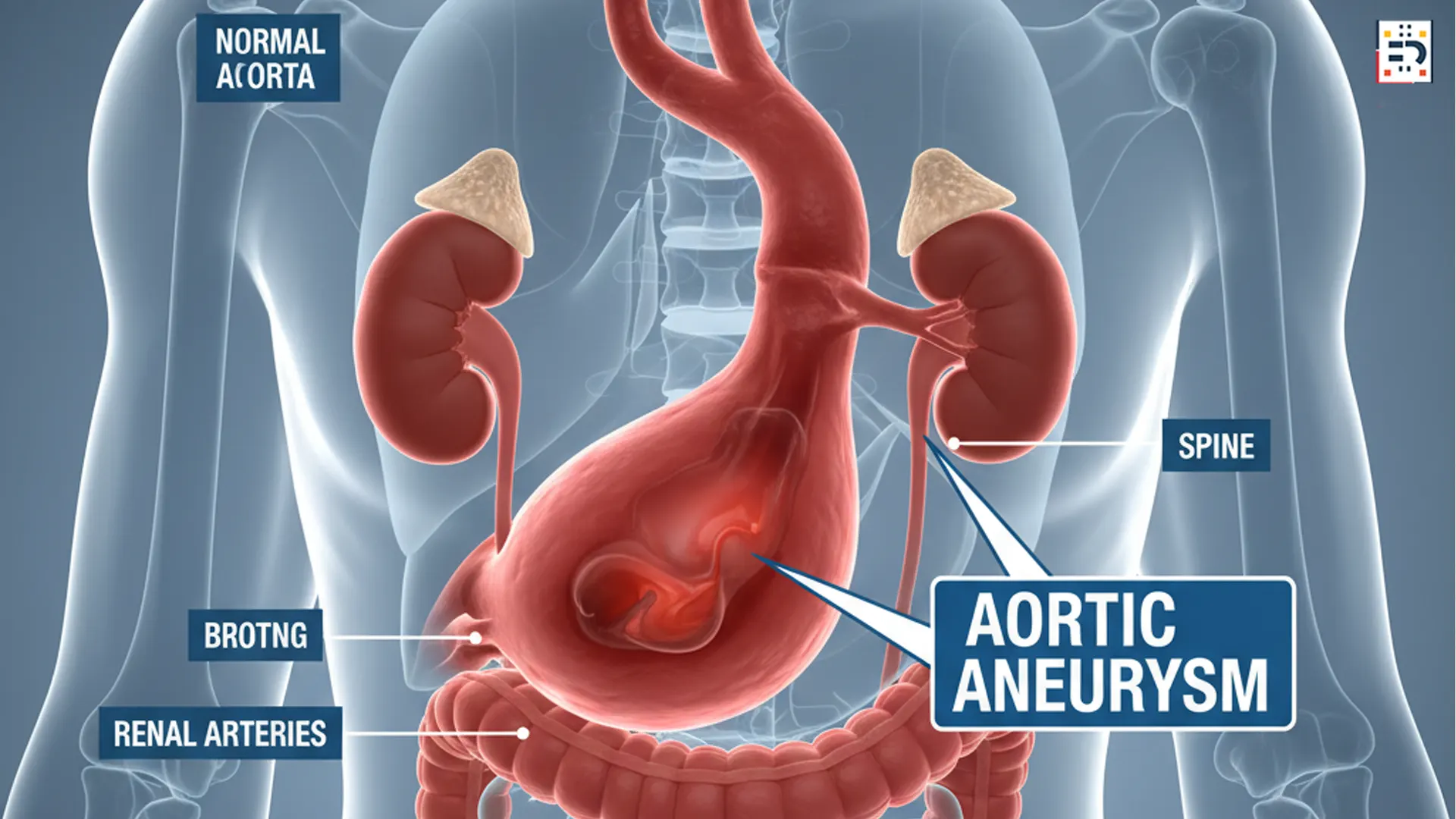What Is an Aortic Aneurysm and Why It’s Called a “Silent Killer”
An aortic aneurysm is a dangerous enlargement of the main artery — the aorta — which carries blood from the heart to the rest of your body. When the aortic wall weakens and bulges outward, it can silently grow for years without causing any symptoms. But if it ruptures, it can cause life-threatening internal bleeding within minutes.
According to the Centers for Disease Control and Prevention (CDC), over 10,000 deaths occur each year in the U.S. due to ruptured aortic aneurysms. The reason it’s called a “silent killer” is simple — most people don’t know they have one until it’s too late.
Types of Aortic Aneurysm: Abdominal vs. Thoracic
There are two major types of aneurysms:
- Abdominal Aortic Aneurysm (AAA) – Occurs in the lower part of the aorta, near the belly button. This type is more common, especially in older men. (Mayo Clinic)
- Thoracic Aortic Aneurysm (TAA) – Develops in the chest area and can affect the part of the aorta close to the heart. (Cleveland Clinic)
Both are serious, but abdominal aneurysms tend to rupture more often because they often go undetected.

Who Is Most at Risk in the U.S.?
Certain Americans are more at risk due to genetics, age, or lifestyle. According to Johns Hopkins Medicine, major risk factors include:
- Being male and over 60 years old
- Smoking (current or past) — the leading preventable cause
- High blood pressure and high cholesterol
- Family history of aneurysm
- Atherosclerosis (plaque buildup in arteries)
- Connective tissue disorders like Marfan or Ehlers-Danlos syndrome
If you fall into any of these categories, you may be living with an aneurysm and not know it.
Why There Are Often No Symptoms
One of the most deceptive parts of an aortic aneurysm is that it often causes no noticeable symptoms.
According to Harvard Health, the aorta can stretch gradually — and your body quietly adapts to the change. Most aneurysms are found incidentally during CT scans or ultrasounds done for unrelated reasons.
In some cases, subtle symptoms may appear:
- Pulsing sensation in the abdomen
- Dull back or belly pain
- Chest tightness or shortness of breath (for thoracic aneurysms)
If these occur, immediate evaluation is essential.

How to Know If You Need Treatment — Even Without Symptoms
The decision to treat depends on size, growth rate, and rupture risk. According to the National Institutes of Health (NIH), you may need treatment if:
- Your aneurysm measures over 5.5 cm (in men) or 5.0 cm (in women).
- It’s growing more than 0.5 cm per year.
- You experience pain or other symptoms.
- You have genetic syndromes that raise rupture risk.
Even with no symptoms, an aneurysm of this size is typically treated with either endovascular stent graft repair (EVAR) or open surgery, depending on anatomy and overall health.
When Monitoring (“Watchful Waiting”) Is Enough
Smaller aneurysms — especially under 4.0 cm — are often managed with careful monitoring instead of surgery.
Doctors usually recommend regular imaging every 6–12 months to track growth.
According to Cleveland Clinic, lifestyle and medication can help slow progression. That includes:
- Controlling blood pressure and cholesterol
- Quitting smoking completely
- Maintaining healthy body weight
- Taking prescribed beta-blockers or ACE inhibitors
Your doctor will determine if your aneurysm is stable enough for continued observation.
Treatment Options: What to Expect
There are two main treatment options in the U.S.:
- Endovascular Aneurysm Repair (EVAR/TEVAR) – A minimally invasive procedure that uses a stent graft placed through small incisions in the groin. (U.S. National Library of Medicine)
- Open Surgical Repair – The surgeon replaces the weakened aortic segment with a synthetic graft. It requires more recovery time but offers lasting results. (Mayo Clinic)
After treatment, patients typically have lifelong follow-ups with CT or ultrasound to ensure the graft remains intact and the aneurysm doesn’t expand again.

How Screening Saves Lives
The U.S. Preventive Services Task Force (USPSTF) recommends a one-time ultrasound screening for men aged 65–75 who have ever smoked.
Learn more at the USPSTF official page.
Early detection can reduce mortality by up to 40%, according to Harvard Health Publishing.
Prevention and Lifestyle: Reduce the Risk Before It Starts
Preventing an aneurysm — or slowing one down — starts with heart-healthy habits.
The American Heart Association (AHA) recommends:
- Stop smoking immediately
- Maintain blood pressure <120/80 mmHg
- Eat a Mediterranean-style diet rich in fruits, vegetables, and whole grains
- Exercise at least 150 minutes per week
- Limit alcohol and manage stress
These steps protect your arteries and prevent additional strain on your aorta.
Living with a Small Aneurysm
If your aneurysm doesn’t yet require surgery:
- Keep all imaging appointments.
- Track your blood pressure daily.
- Report any new pain or pulsing sensations right away.
- Ask your doctor about genetic testing if aneurysms run in your family.
Many people live full, healthy lives for years with small, stable aneurysms — as long as they stay vigilant.
FAQs
1. How common are aortic aneurysms in the U.S.?
Roughly 1 in 250 people over age 55 may have an aortic aneurysm, per CDC data.
2. Can women get aneurysms too?
Yes. Although less common, women often have aneurysms that rupture at smaller sizes, which is why screening is still vital. (NIH)
3. How often should I be checked?
Usually every 6–12 months, depending on the aneurysm’s size and growth rate. (Cleveland Clinic)
4. Can diet really help?
Absolutely — a diet low in saturated fats and rich in omega-3s helps maintain vascular elasticity. (Harvard Health)
5. What if my aneurysm ruptures?
Call 911 immediately. Symptoms include sudden, severe pain, dizziness, fainting, and low blood pressure. Survival depends on rapid surgery. (Mayo Clinic)
6. Does insurance cover screening?
Yes — Medicare Part B covers a one-time AAA screening for eligible men aged 65–75 who have ever smoked. (Medicare.gov)
The aortic aneurysm truly lives up to its nickname — the “silent killer.” But knowledge and timely action can turn that danger into control.
If you’re over 60, smoke, or have high blood pressure, talk to your healthcare provider about screening today.
In the U.S., you have access to world-class treatment centers — from Mayo Clinic, Cleveland Clinic, and Johns Hopkins Medicine — that can detect and repair aneurysms before it’s too late.
Early detection saves lives. Even with no symptoms, the right test could save yours.
#AorticAneurysm #HeartHealth #SilentKiller #AneurysmAwareness #Cardiology #AorticCare #HealthEducation #VascularHealth #USAMedicine #PreventRupture


